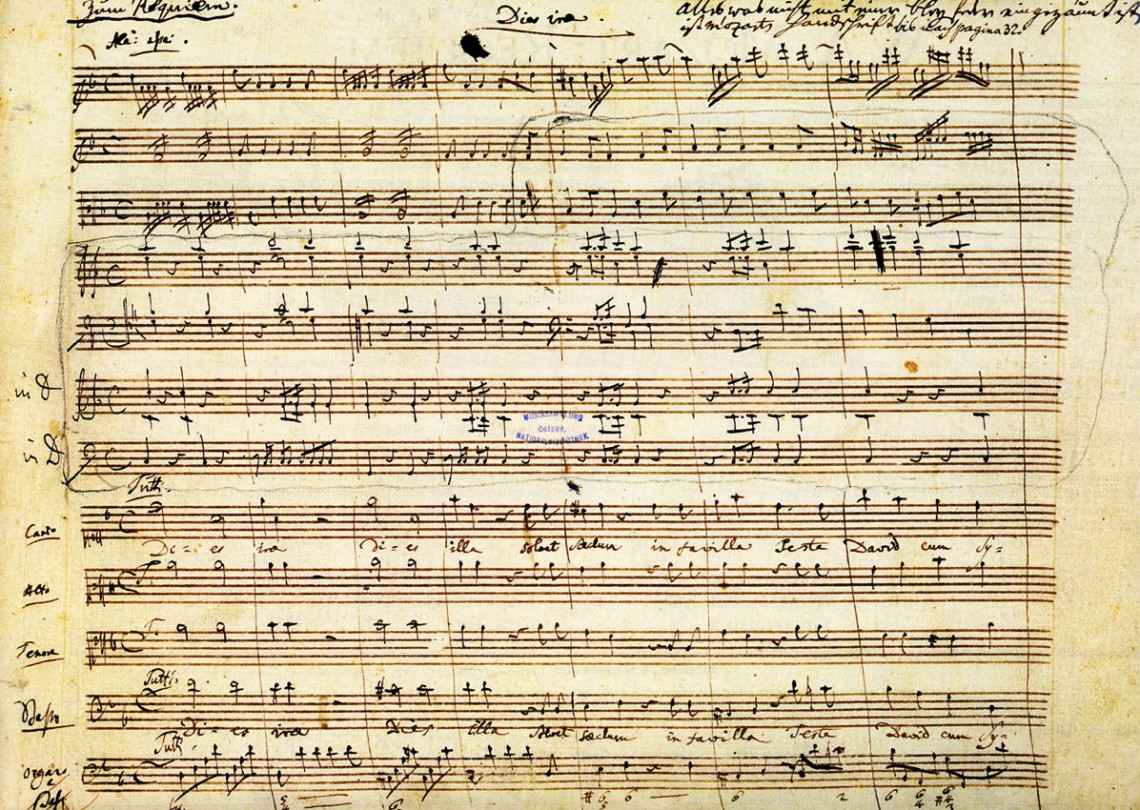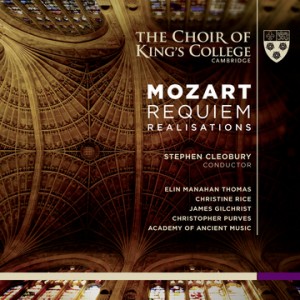
One of the world’s favourite pieces of sacred Western music is Mozart’s setting of the Requiem. It also happens to be a work shrouded in mystery and, ever since Peter Shaffer wrote the play Amadeus, murderous intrigue. Stephen Cleobury, the longtime music director of King’s College, Cambridge, tries to make it all clear in a new recording.
- Classical Music 101: What Does A Conductor Do? - June 17, 2019
- Classical Music 101 | What Does Period Instrument Mean? - May 6, 2019
- CLASSICAL MUSIC 101 | What Does It Mean To Be In Tune? - April 23, 2019
Well, musically, anyway.
This is one of those solid, balanced recordings that serves as a model of how the conscientious musician consults with the texts, history and performance traditions, crafting something that does justice to all.
The recording engineers haven’t entirely overcome the reverberant acoustic under the gorgeous arches of King’s College Chapel, which blurs every edge, no matter how precisely the musicians try to work.
But there are little moments of pure magic that break through, like a little cello figure at the start of the Recordare section of the Sequentia. It’s these touches that make this album a keeper.
The men and boys of the storied Kings College Choir are excellent, as are the accompanists, members of the Academy of Ancient Music. The four soloists, all hired from outside, are solid, too, with soprano Elin Manahan Thomas sounding very much like a boy.
Conductor Stephen Cleobury knows exactly where he wants everything to go.
Mozart didn’t live to finish the Requiem. Shaffer made it look like Antonio Salieri tried hard to finish off the very sick composer by making him work harder to finish the composition.
The real story is that an Austrian aristocrat, Franz Count von Walsegg, commissioned the piece as a memorial to his wife, Countess Anna, who had died in early 1791. He hired a Viennese lawyer as a go-between, and someone else to make the payments, but it is probable that Mozart knew it was for Count Walsegg.
Mozart had sketched out the overall shape of the Requiem, but had only fully completed the Introit before he died on Dec. 5 of the same year. Widow Constanze desperately needed the last payment for the commission, so she called on at least a couple of other Viennese composers to help finish the piece.
Some autograph pages are all Mozart. Others have parts written in later by as many as three other people.
Walsegg didn’t get to conduct a performance of the work until December, 1793. Ever since then, musicians and scholars have asked themselves What Would Mozart Have Done had he finished the Requiem himself.
Cleobury rummaged through every possible modern version and decided to record the original completed version by Franz Süssmayr, then to add on alternate takes on four movements, plus an Amen. This is the part that gives the album its Realisations title.
The final Lacrimosa has to be the most dramatically striking choice. This version, produced by veteran English composer Michael Finnissy, features a soaring soprano descant laid over the the choral music we know so well, turning the music into something even more grand and operatic.
Duncan Bruce’s Benedictus and Robert Levin’s Sanctus and Cum santis tuis are sensible and balanced. Richard Maunder’s is the most serious structural intervention, in that he proposed an Amen to follow the Cum sanctis tuis. His dancing, fugal result is gorgeous. He found a sketch for this Amen in a pile of Mozart sketches from mid-1791 that also included ideas for The Magic Flute.
The debates over what is Mozart’s and what of the later additions should be kept or thrown away will endure until the last of the glaciers melt. But what won’t change is the beauty and emotional power of this music — no matter who wrote it.
The album comes with a second CD that features more than an hour of history and commentary.
You’ll find all the details here.
This is the all-too-short trailer produced by the choir:
John Terauds
- Classical Music 101: What Does A Conductor Do? - June 17, 2019
- Classical Music 101 | What Does Period Instrument Mean? - May 6, 2019
- CLASSICAL MUSIC 101 | What Does It Mean To Be In Tune? - April 23, 2019




